LITTLE SHOP OF HORRORS (1960): A Miracle Born Of Schlock Thrift
In 1960, Roger Corman made two of his greatest films. One of them was House Of Usher, which found him adapting prestige material from Edgar Allen Poe and working with a real star, Vincent Price, to prove he could make a cost effective horror movie that could compete with major studio fare. The other film was made in three days on leftover sets from another film. That might sound like the formula for a nowhere quickie but that is not the case here: that second film was Little Shop Of Horrors, a quirky blend of horror and black comedy that has become one of Corman's most popular and beloved films.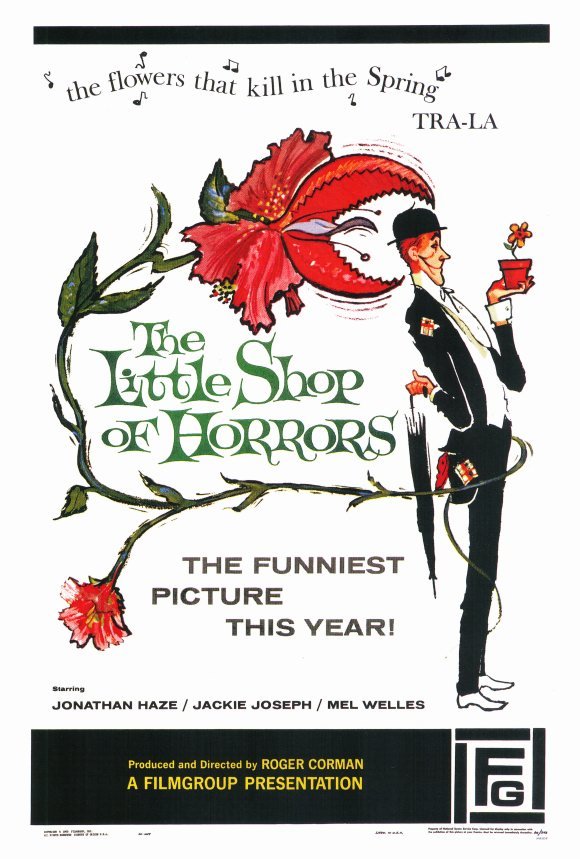 Charles B. Griffith dreamt up the fast-moving scenario, which takes place primarily in a skid-row flower shop. Seymour (Jonathan Haze) is the nebbish hero of the story, a hard-luck type who lives with his hypocondriac/alkie mom, Winifred (Myrtle Vail) and works for money-fixated tyrant Gravis Mushnik (the great Mel Welles). He's got two things that make his life worthwhile - his pretty and kind co-worker, Audrey (Jackie Joseph) and a little plant of mysterious, exotic origin that he's trying to nurse to health. The relationship with Audrey has promise but the plant looks like it's going to die.However, Seymour makes a ghastly discovery about the plant when he accidentally pricks his finger and bleeds over it - causing it to open its Venus flytrap-like mouth. Seymour feeds it with his blood for a short while and it begins to talk demanding more. When our hero accidentally bumps off a hobo, he feeds the body to the plant - now dubbed "Audrey Jr." - and it grows into a large, ornate
Charles B. Griffith dreamt up the fast-moving scenario, which takes place primarily in a skid-row flower shop. Seymour (Jonathan Haze) is the nebbish hero of the story, a hard-luck type who lives with his hypocondriac/alkie mom, Winifred (Myrtle Vail) and works for money-fixated tyrant Gravis Mushnik (the great Mel Welles). He's got two things that make his life worthwhile - his pretty and kind co-worker, Audrey (Jackie Joseph) and a little plant of mysterious, exotic origin that he's trying to nurse to health. The relationship with Audrey has promise but the plant looks like it's going to die.However, Seymour makes a ghastly discovery about the plant when he accidentally pricks his finger and bleeds over it - causing it to open its Venus flytrap-like mouth. Seymour feeds it with his blood for a short while and it begins to talk demanding more. When our hero accidentally bumps off a hobo, he feeds the body to the plant - now dubbed "Audrey Jr." - and it grows into a large, ornate 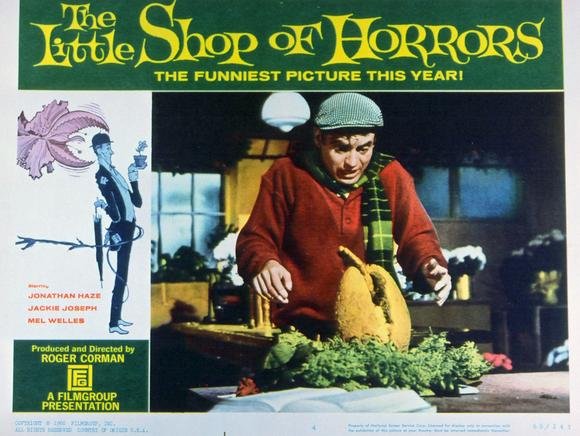 size. This draws in patrons, pleasing the boss and making it possible for Seymour to get closer to Audrey. Unfortunately for all, Audrey Jr. demands more food - and Seymour finds himself resorting to drastic measures to appease the plant as it grows bigger in size and popularity.Little Shop Of Horrors remains a favorite with the Corman fanbase because it's a great display of the skills he'd been building up over five steady years of work as a director. The budget and time constraints don't hamper his creativity in any way: the end result is economically made but stylish, funny and fast. He keeps the frequent dialogue scenes
size. This draws in patrons, pleasing the boss and making it possible for Seymour to get closer to Audrey. Unfortunately for all, Audrey Jr. demands more food - and Seymour finds himself resorting to drastic measures to appease the plant as it grows bigger in size and popularity.Little Shop Of Horrors remains a favorite with the Corman fanbase because it's a great display of the skills he'd been building up over five steady years of work as a director. The budget and time constraints don't hamper his creativity in any way: the end result is economically made but stylish, funny and fast. He keeps the frequent dialogue scenes 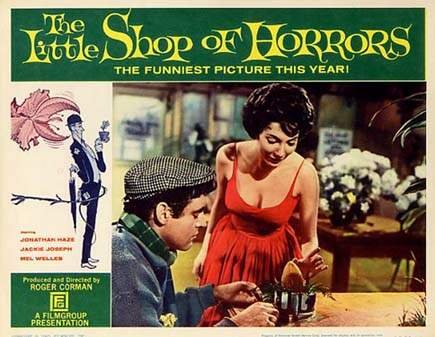 interesting by staging them at a breakneck tempo and using a well-seasoned cast of repertory players. When he gets to step outside the flower shop - namely in an oddball chase finale set in a junkyard - he shows a natural flair for composition and staging that manages to dazzle the eye at a minimum of cost.However, just as much credit must go to stalwart Corman scripter Griffith, who turns in one of his best screenplays here. The dialogue has real snap, mixing wordplay and Jewish humor with verve, and the plotline offers a blend of horror and humor that other genre filmmakers wouldn't catch up to for a long while. Most importantly, Griffith is consistently creative and throws in a unique touch every few minutes: fan favorite moments include a flower shop patron named
interesting by staging them at a breakneck tempo and using a well-seasoned cast of repertory players. When he gets to step outside the flower shop - namely in an oddball chase finale set in a junkyard - he shows a natural flair for composition and staging that manages to dazzle the eye at a minimum of cost.However, just as much credit must go to stalwart Corman scripter Griffith, who turns in one of his best screenplays here. The dialogue has real snap, mixing wordplay and Jewish humor with verve, and the plotline offers a blend of horror and humor that other genre filmmakers wouldn't catch up to for a long while. Most importantly, Griffith is consistently creative and throws in a unique touch every few minutes: fan favorite moments include a flower shop patron named 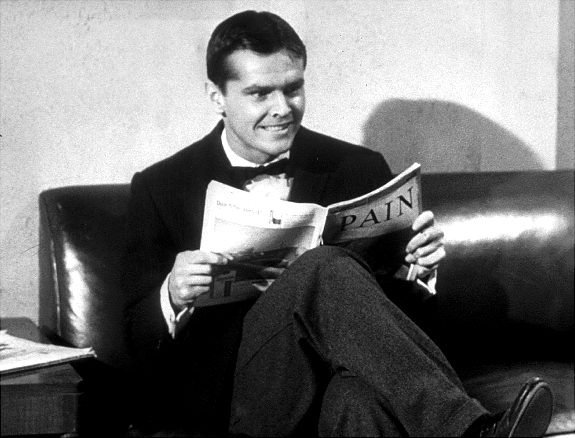 Burson Fouch (Dick Miller) who likes to eat flowers and a masochistic patient (played by a young Jack Nicholson) who thrills to the idea of dentistry without anesthesia. The film also pokes fun at Dragnet via hard-boiled narration and a couple of hilariously stoic cops.Finally, the acting is top-flight for a film at this budgetary level, mainly because the cast draws from a group of actors that Corman had worked with on several previous films. Haze shines in a rare lead performance as Seymour, creating a likeable noodnik pitched somewhere between Jerry Lewis and Gilligan-era Bob Denver. Welles is a tyrannical delight as the boss, showing great chemistry with Haze and slyly wringing every comedic nuance
Burson Fouch (Dick Miller) who likes to eat flowers and a masochistic patient (played by a young Jack Nicholson) who thrills to the idea of dentistry without anesthesia. The film also pokes fun at Dragnet via hard-boiled narration and a couple of hilariously stoic cops.Finally, the acting is top-flight for a film at this budgetary level, mainly because the cast draws from a group of actors that Corman had worked with on several previous films. Haze shines in a rare lead performance as Seymour, creating a likeable noodnik pitched somewhere between Jerry Lewis and Gilligan-era Bob Denver. Welles is a tyrannical delight as the boss, showing great chemistry with Haze and slyly wringing every comedic nuance 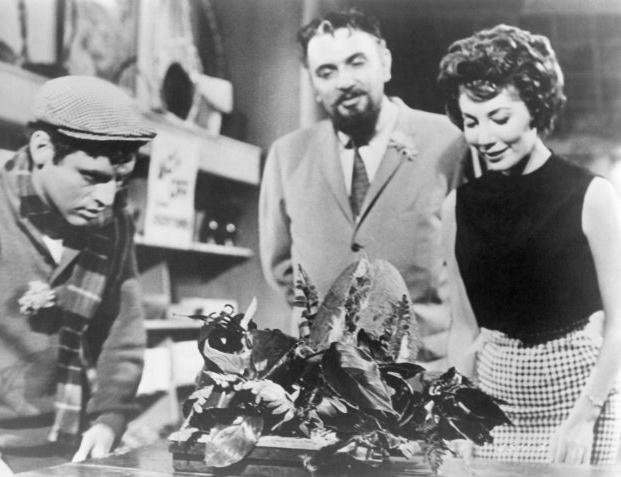 from Griffith's dialogue. Joseph is charming as the bubble-headed but sweet love interest, offering a surprisingly low-key variation on the usual ditz archetype. Finally, Miller deserves praise for his deadpan, fast-talking turn as the flower-eating customer and Nicholson hints at his future over-the-top performances as the crazed dental patient.In short, the oddball charm of Little Shop Of Horror hasn't dimmed one iota. Corman would go on to bigger, more impressive films and Little Shop Of Horrors would be revived as a musical, first on the stage then on the screen, but the original article remains an energetic blast of poverty-row fun.
from Griffith's dialogue. Joseph is charming as the bubble-headed but sweet love interest, offering a surprisingly low-key variation on the usual ditz archetype. Finally, Miller deserves praise for his deadpan, fast-talking turn as the flower-eating customer and Nicholson hints at his future over-the-top performances as the crazed dental patient.In short, the oddball charm of Little Shop Of Horror hasn't dimmed one iota. Corman would go on to bigger, more impressive films and Little Shop Of Horrors would be revived as a musical, first on the stage then on the screen, but the original article remains an energetic blast of poverty-row fun.


